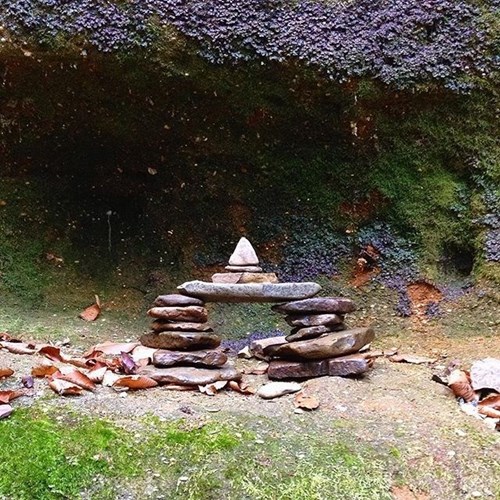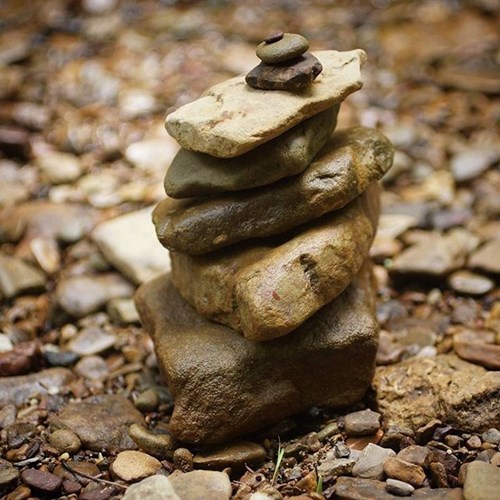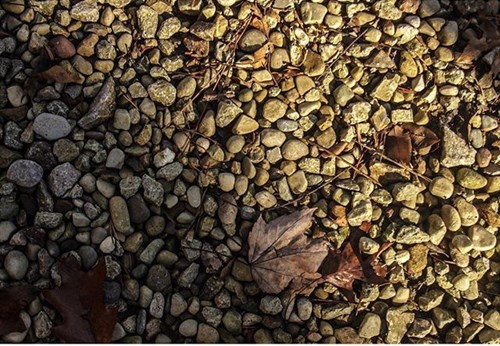Stop the cairn-age. Don’t stack rocks.

Why you should abandon rock-stacking in Hocking Hills
The expression isn’t, Take only pictures, leave only footprints — and cairns.
Leave no trace doesn’t just refer to litter. It also means leaving the environment around you as undisturbed as possible. Sure, it might amuse you to stack those rocks and make your own cairns in Hocking Hills, but, as Hocking Hills Tourism Association Executive Director Karen Raymore noted in an opinion piece for the Logan Daily News, it disturbs the environment and can be dangerous.
High Country News likewise lamented the practice earlier this year, saying, “Those of us who like to hike through wilderness areas are glad to see the occasional cairn, as long as it's indicating the right way to go at critical junctions in the backcountry.
Stone piles have their uses, but the many rock stacks that I'm seeing on our public lands are increasingly problematic.”
Let us show you why you should abandon this trend.
If it’s man-made, it doesn’t belong
We understand those of you who make cairns in Hocking Hills are most likely nature-lovers. Since you appreciate the trails and woods, you understand the urge to hit those trails to escape the world of man-made objects — and sometimes to escape actual humans as well.
You might not immediately equate rock-stacking with graffiti, but in many ways it’s not much different. You’re still disturbing the natural world with something man-made.
You might get someone lost
Rock-stacking is used in many parts of the world as a way to mark trails. By building them in random locations you could wind up leading a hiker in the wrong direction.

You are disrupting an ecosystem
Picture someone taking the roof off of all the houses on your street and then stacking them together. Each roof covers a home, and inside each home is a particular environment. Beneath those stones are little particles and creatures inhabiting the soil and the moisture beneath. Leave the little Whos alone.

Do this instead
According to Leave No Trace, the Center for Outdoor Ethics, sometime last year, "longtime Leave No Trace supporters, including the Appalachian Mountain Club, State of Maine, Acadia National Park, Appalachian Trail Conservancy, US Geologic Survey, Green Mountain Club and the Adirondack Mountain Club” all worked to address the problem of cairns and came up with a set of guidelines hikers should follow.
Do not build unauthorized cairns. When visitors create unauthorized routes or cairns they often greatly expand trampling impacts and misdirect visitors from established routes to more fragile or dangerous areas. This is especially important in the winter when trails are hidden by snow. Thus, visitor-created or “bootleg” cairns can be very misleading to hikers and should not be built.
Do not tamper with cairns. Authorized cairns are designed and built for specific purposes. Tampering with or altering cairns minimizes their route marking effectiveness. Leave all cairns as they are found.
Do not add stones to existing cairns. Cairns are designed to be free draining. Adding stones to cairns chinks the crevices, allowing snow to accumulate. Snow turns to ice, and the subsequent freeze-thaw cycle can reduce the cairn to a rock pile.
Do not move rocks. Extracting and moving rocks make mountain soils more prone to erosion in an environment where new soil creation requires thousands of years. It also disturbs adjacent fragile alpine vegetation.
Stay on trails. Protect fragile mountain vegetation by following cairns or paint blazes in order to stay on designated trails.
By following these guidelines, we can minimize the environmental footprint and make sure cairns are used for their proper function.



